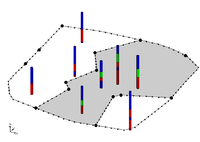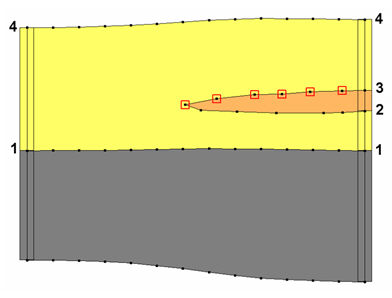GMS:Including Borehole Cross Sections: Difference between revisions
From XMS Wiki
Jump to navigationJump to search
No edit summary |
No edit summary |
||
| Line 8: | Line 8: | ||
[[Image:xsect_hor.jpg|none|frame|Example of how cross section data inherits horizon id from boreholes]] | [[Image:xsect_hor.jpg|none|frame|Example of how cross section data inherits horizon id from boreholes]] | ||
In this case the marked points on the cross section inherit horizon ID 3. If wanting more control over the interpolation of horizon 3, then add more points to the arc. This can be done by selecting the '''Select Arc'' tool's right-click '''Redistribute Virtices''' command in the ''Cross Section Editor''. The triangle density of the primary TIN also controls how well the resulting solid matches the user-defined cross section. Since the points on the cross section are interpolated to the primary TIN, if the TIN does not have a significant number of triangles in the vicinity of the cross section then there is no way the TIN surface can match the cross section. | In this case the marked points on the cross section inherit horizon ID 3. If wanting more control over the interpolation of horizon 3, then add more points to the arc. This can be done by selecting the '''Select Arc''' tool's right-click '''Redistribute Virtices''' command in the ''Cross Section Editor''. The triangle density of the primary TIN also controls how well the resulting solid matches the user-defined cross section. Since the points on the cross section are interpolated to the primary TIN, if the TIN does not have a significant number of triangles in the vicinity of the cross section then there is no way the TIN surface can match the cross section. | ||

